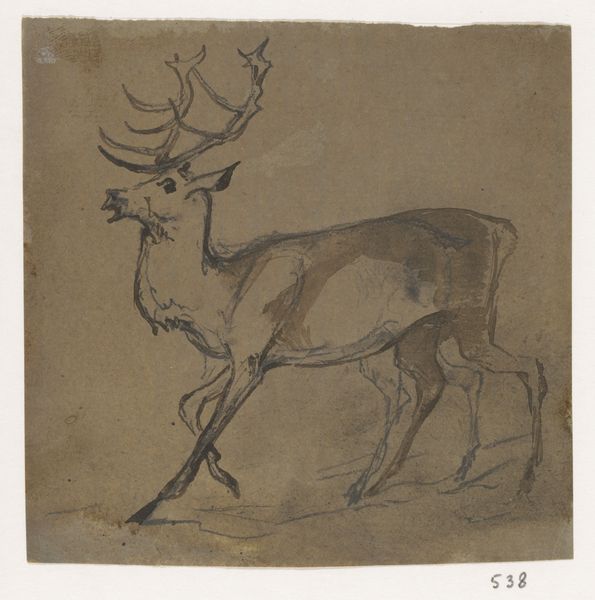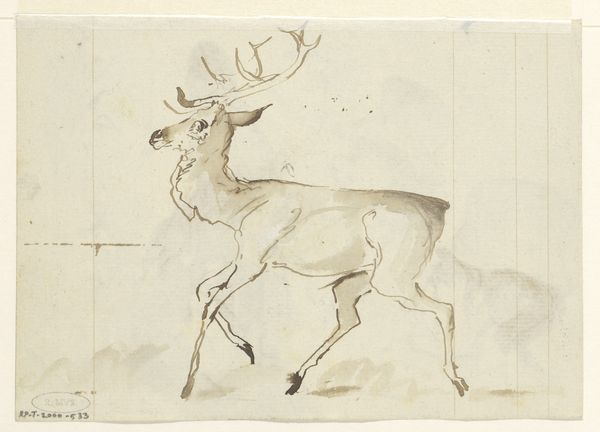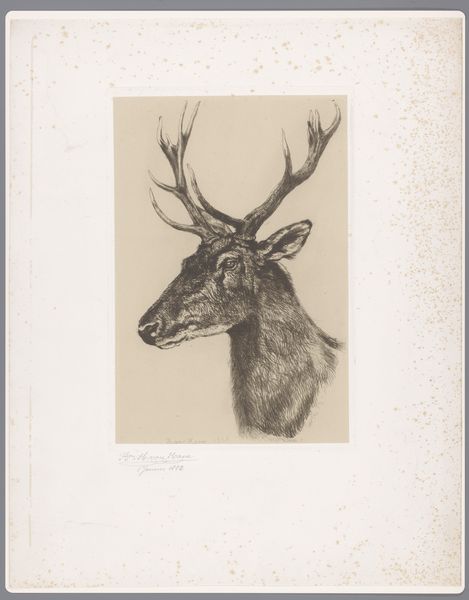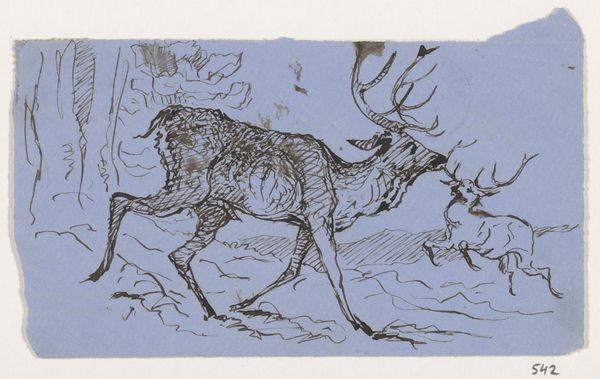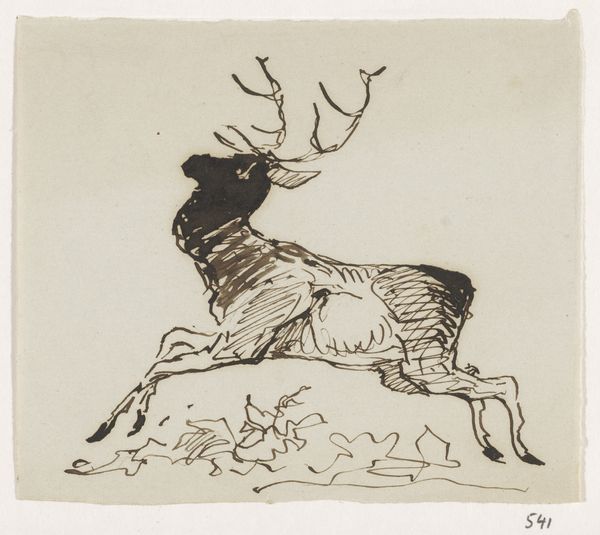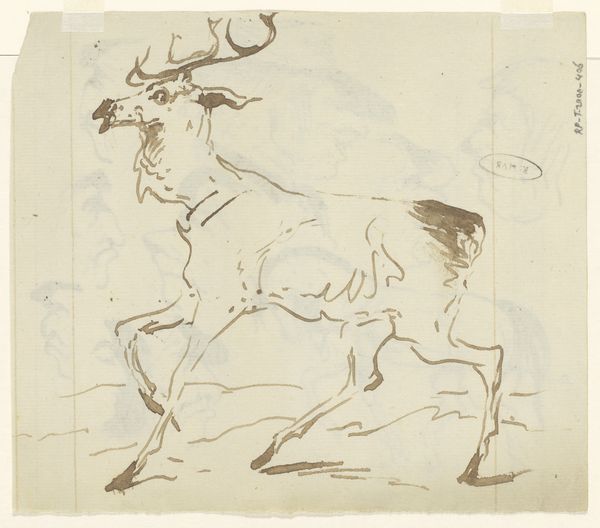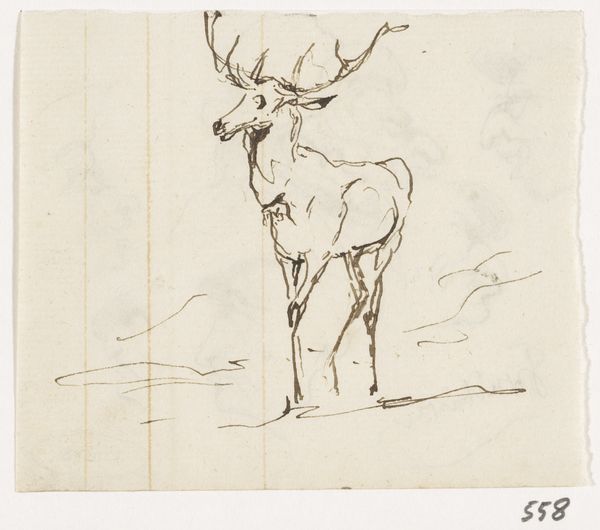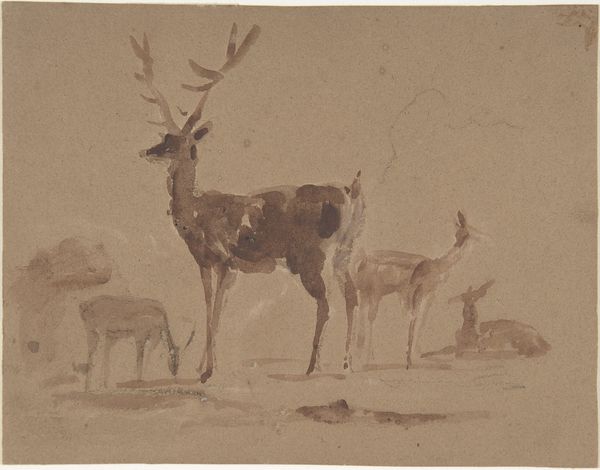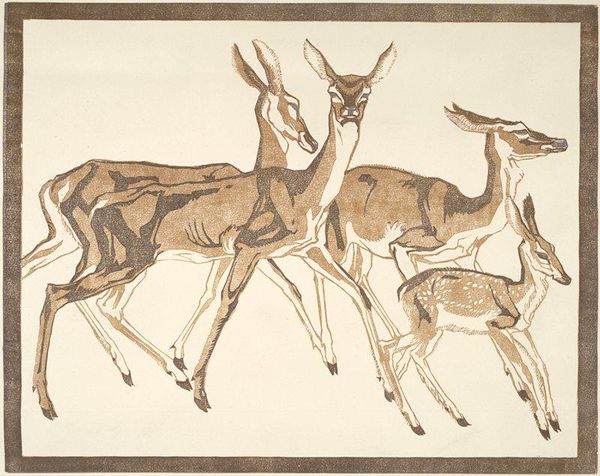
drawing, print, etching
#
drawing
# print
#
etching
#
landscape
#
figuration
#
realism
Dimensions: Sheet: 2 15/16 × 2 15/16 in. (7.5 × 7.5 cm)
Copyright: Public Domain
Editor: We're looking at "The Deer," an etching by Charles Jacque, made sometime between 1848 and 1858. There’s a certain starkness to the image; the animal is rendered so precisely with such minimal background. What can you tell us about it? Curator: Consider the context of 19th-century printmaking. Etching, unlike painting, allowed for mass production. Jacque’s skill lies not just in representation, but in translating his vision into a readily reproducible form. How does the accessibility of this medium shape our understanding of his subject matter – rural life and animals? Editor: That's a good point. Did the mass production affect its status as art, maybe pushing it closer to craft or illustration? Curator: Exactly! The “art” lies not only in the image itself but in the artist’s conscious manipulation of a mechanical process. How does this blurring of high art and the labor of production challenge our traditional definitions? Also consider, who would consume images like these? What did they represent to a burgeoning industrial society? Editor: So, it’s not just about depicting a deer; it's about the means by which that image reaches the public and what that says about society's relationship with both art and nature during the industrial revolution? Curator: Precisely. And think about the materials – the metal plate, the acid, the paper – each plays a role in shaping the final image and its meaning. What other details about the process of etching strike you, in the context of realism? Editor: I’ll definitely be looking at etchings with new eyes now, considering not just the subject but how its materiality and production inform its artistic value.
Comments
No comments
Be the first to comment and join the conversation on the ultimate creative platform.
